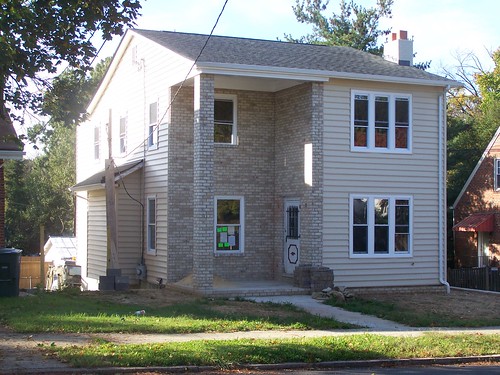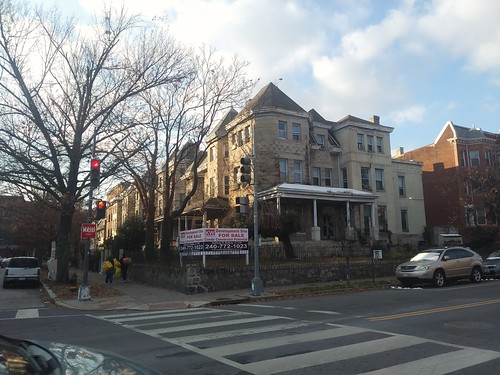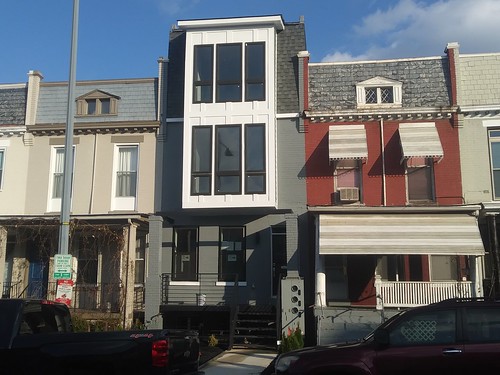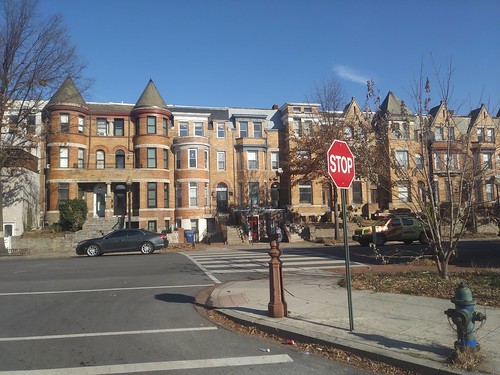Biggest issues of the coming year?: regulation of building alterations in "old" neighborhoods | expanding design review requirements
In the past, I've often written a series of posts on New Year's Day, outlining major issues, such as this series from 2011:
-- "New Years post #7: Anacostia and sustainable economic development and revitalization"
-- "New years post #6 -- the crazy thing about U.S. zoning is that it's not designed to maximize overall land value
-- "New years post #5: DC City New years post #5: DC City Council Committees and striving to be a world class city"
-- "New years post #4: How to Keep Resolutions and change behavior"
-- "New Years post #3: How about more community self-help"
-- New Years post #2: sustainability and energy"
-- "New Years post #1"
I don't have it in me to do that this year. And there are many prominent issues:
-- the impact on cities of the changes to the federal tax code
-- the fall off in velocity of the "back to the city" movement
-- backlash to the "back to the city" movement as housing prices increase in response to greater demand exceeding supply and additions to supply
-- the mid-term elections for Congress
-- in DC, local elections, note that Harry Jaffe in Washingtonian wishes there would be a progressive challenge to Mayor Bowser so that issues can be discussed ("No One Wants to Run Against Mayor Muriel Bowser")
-- etc.
But in terms of DC's vernacular, neighborhood focused building stock--as opposed to commercial and federal buildings--other than upward re-pricing ("What people don't get about the DC housing market: supply is much less than demand, so prices keep rising (a/k/a basic economics)" and "The nature of high value ("strong") residential real estate markets") I think the biggest issue is the lack of design protections in older neighborhoods that aren't historically designated.
In DC, only historically designated neighborhoods have design review requirements.
In non-designated neighborhoods, anything goes. And it does. (On my block already 10% of the houses have been transmogrified.)

This house replaced a bungalow and is a couple doors down. Other bungalows have been similarly "embiggened" on our block.

Large corner property being marketed for its expansion potential, 13th and Kenyon Streets NW, Columbia Heights. Columbia Heights housing is mostly pre-1920, but the neighborhood isn't designated historic.

Weird pop up rowhouse, 13th Street NW, Columbia Heights.
Houses like these are being converted to two or three unit buildings, taking advantage of the larger footprint authorized by building regulations, which is larger than what was typical built before 1920. Note that I don't necessarily have a problem with "embiggening" houses, just the way that it is done.

Weird pop up rowhouse on Florida Avenue NW.
Because DC's historic residential architecture, especially that of neighborhoods constructed before 1920, is such a defining element of the city, the way that buildings are being altered in such awful ways to me is one of the most important planning issues, and will become even more pronounced with time.
The solution should be mandatory design review (and consultation). Again, that doesn't mean that houses can't be enlarged or split up, just that it has to be done in a manner that is aesthetically compatible with the building itself and the rest of the block/the neighborhood along the argument outlined by Stephen Semes in terms of the aesthetic value of the ensemble ("New Buildings Among Old: Historicism and the Search for an Architecture of Our Time").
See:
-- "Changing matter of right zoning regulations for houses to conform to heights typical within neighborhoods, not the allowable maximum," 2012
-- "Other arguments for mandatory design review," 2013
-- "Speaking of the value of city-wide design review," 2013
Labels: building regulation, historic preservation, neighborhood revitalization, urban design/placemaking





0 Comments:
Post a Comment
<< Home